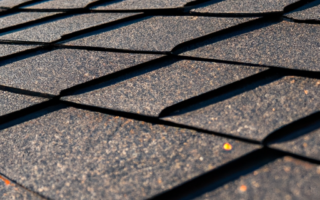– Sustainable Roofing Alternatives: A Guide to Eco-Friendly Materials
When it comes to designing and constructing eco-friendly buildings, one important aspect that often gets overlooked is the choice of roofing materials. Traditional roofing materials, such as asphalt shingles, can have a significant negative impact on the environment due to their production process, high energy consumption, and non-biodegradable properties. However, there is a growing trend towards sustainable roofing alternatives that aim to minimize environmental harm and promote energy efficiency.
One popular option for eco-friendly roofing is metal. Metal roofs are made from recycled materials, such as aluminum or steel, and can be recycled again at the end of their lifespan. They have a longer lifespan compared to traditional materials, which reduces the need for replacement and waste generation. Additionally, metal roofs are reflective, which helps to reduce heat absorption and lower energy costs for cooling.
Another sustainable roofing option is green roofs, also known as living roofs. Green roofs are essentially a layer of vegetation installed on top of a waterproofing membrane. They provide numerous environmental benefits, such as improved air quality, insulation, and stormwater management. Green roofs also help to mitigate the urban heat island effect by absorbing heat and reducing the need for air conditioning.
For those looking for a more traditional aesthetic, wood shingles can be a sustainable choice. Wood shingles are typically made from sustainably harvested materials, such as cedar. They are biodegradable and have a longer lifespan compared to asphalt shingles. Wood shingles also provide natural insulation and can help to reduce energy consumption.
Solar roofs are another innovative and sustainable option for environmentally conscious homeowners. These roofs are equipped with solar panels that generate electricity from sunlight. Solar roofs can offset energy consumption and reduce the reliance on fossil fuels. They are particularly beneficial for regions with abundant sunlight, as they can significantly reduce energy bills and carbon footprint.
When considering eco-friendly roofing materials, it’s important to also think about their installation and maintenance requirements. Opting for materials that are locally sourced can reduce the carbon footprint associated with transportation. Additionally, choosing durable materials that require minimal maintenance can further enhance the sustainability of the roofing system.
In conclusion, eco-friendly roofing options offer numerous benefits for both the environment and the homeowner. From metal roofs to green roofs and solar roofs, there are plenty of sustainable alternatives to traditional roofing materials. By choosing these materials, we can contribute to a greener and more sustainable future.
– Exploring Green Roofing Options: A Sustainable Approach to Roofing
When it comes to choosing roofing materials, it’s important to consider not only the durability and aesthetics but also the impact on the environment. Luckily, there are numerous eco-friendly roofing options available for those who want a more sustainable approach to roofing. These green roofing materials not only reduce the carbon footprint but also provide a range of benefits such as energy efficiency, stormwater management, and improved air quality.
One popular option for eco-friendly roofing is the use of solar panels. Solar panels not only generate clean and renewable energy but also help to reduce electricity bills by harnessing the power of the sun. They can be installed on various types of roofing materials, making them a versatile choice for both residential and commercial buildings.
Another sustainable roofing material gaining popularity is metal. Metal roofs are made from recycled materials and have a long lifespan, reducing the need for frequent replacements. Additionally, metal roofs reflect sunlight, helping to keep the building cool and reducing the demand for air conditioning. They are also highly durable and can withstand harsh weather conditions, making them a reliable choice.
For those who prefer a more natural and aesthetically pleasing option, green roofs are an excellent choice. Green roofs consist of a layer of vegetation and soil planted on top of a waterproof membrane. They provide insulation, absorb rainwater, and filter pollutants from the air, contributing to improved air quality in urban areas. Green roofs can also reduce the heat island effect and provide habitats for birds and insects.
Recycled roofing materials, such as rubber or plastic shingles, are another eco-friendly option worth considering. These materials are made from recycled materials like tires or plastic bottles, reducing waste and utilizing resources that might otherwise end up in landfills. They are durable, low-maintenance, and can mimic the appearance of traditional roofing materials.
Lastly, clay and slate tiles are natural and sustainable roofing materials that have been used for centuries. Clay and slate are abundant and can be recycled after their lifespan is over. These tiles are known for their durability and resistance to fire and insects. Additionally, they provide excellent insulation and can help regulate indoor temperatures, reducing energy consumption for heating and cooling.
In conclusion, when it comes to eco-friendly roofing options, there are several sustainable materials to choose from. Whether it’s solar panels, metal roofs, green roofs, recycled materials, or clay and slate tiles, each option provides its own unique benefits while minimizing environmental impact. By opting for these green roofing materials, homeowners and businesses can contribute to a more sustainable future.



